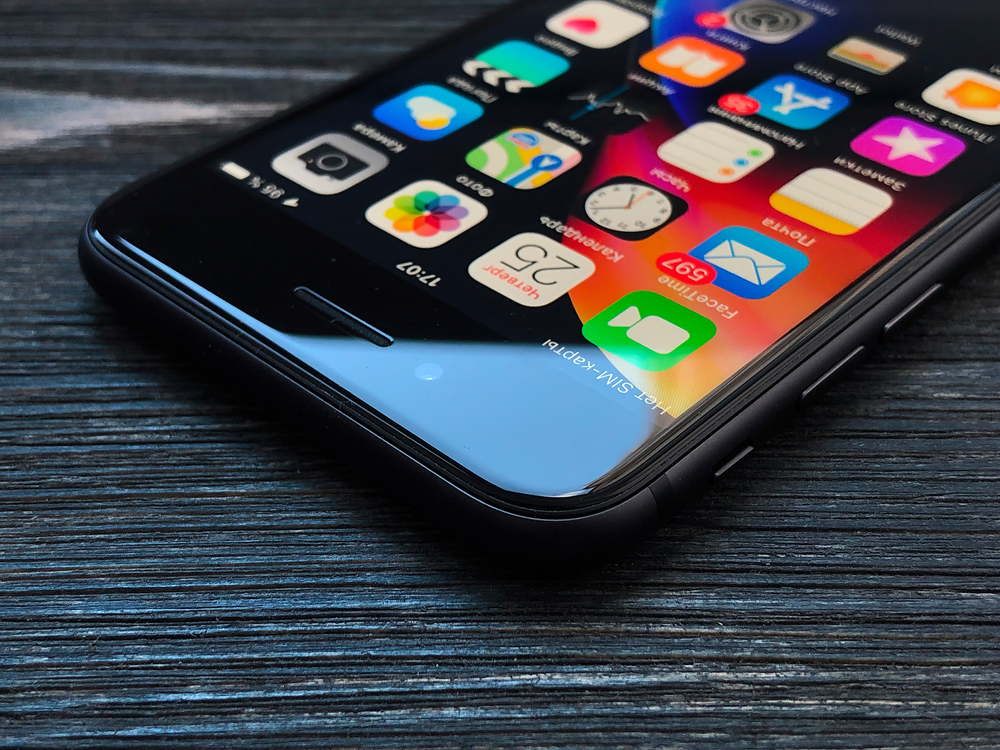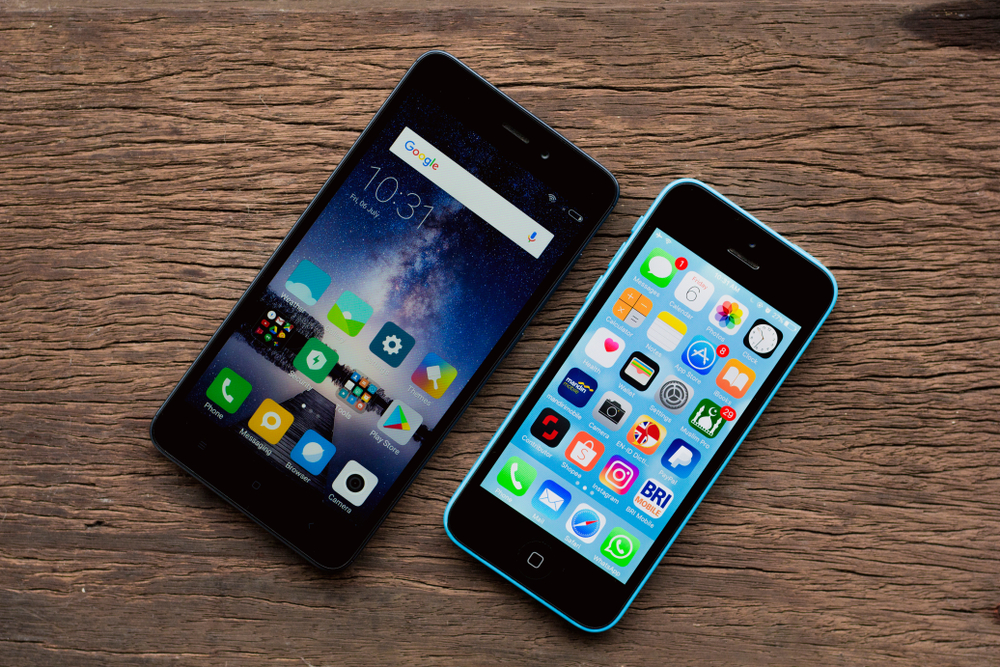
Mastering Mobile App Marketing: Tips & Tricks for Stellar Promotion

The mobile app industry is a crowded marketplace with millions of apps vying for user attention. With nearly 2.87 million apps on the Google Play Store and over 1.96 million on the Apple App Store, standing out from the crowd is no easy task. However, with the right marketing strategies, you can maximize your app's visibility, drive downloads, and ultimately increase your user base.
1. Define Your Target Audience
A crucial first step in mobile Android or iOS app marketing is defining your target audience. Understanding who your app is designed for will help you craft a marketing campaign that resonates with your ideal users. Start by analyzing your app's features, functionality, and benefits to determine which demographics and user segments are most likely to find value in it.
Consider user demographics such as age, gender, location, and interests. Conduct market research to identify your potential users' preferences, needs, and pain points. This knowledge will enable you to tailor your promotional efforts accordingly, ensuring maximum impact.
2. Optimize Your App Store Listing
The app stores are the primary platforms where users discover and download apps. Therefore, optimizing your app's store listing is crucial for organic visibility. Start by optimizing your app's title and description with relevant keywords to increase its chances of appearing in search results. Ensure that the description highlights the app's key features and benefits, convincing users to download it.
In addition to the textual elements, make sure your app's icon stands out and accurately represents what your app offers. As users scroll through the app store, a visually appealing and distinctive icon can catch their attention, increasing the likelihood of engagement.
Encourage positive reviews and ratings by providing a seamless user experience. Address any bugs or usability issues promptly, as negative reviews can significantly impact potential downloads.
3. Leverage App Store Optimization (ASO)
App Store Optimization (ASO) is the process of optimizing your app's visibility within the app stores. By implementing ASO strategies, you can improve your app's ranking in search results and increase the likelihood of it being discovered by users.
Research and analyze relevant keywords that users are likely to search for when looking for apps similar to yours. Incorporate these keywords strategically into your app's title, description, and keyword tags to improve its discoverability.
Regularly monitor and analyze your app's performance using tools like App Annie or Sensor Tower. These platforms can provide valuable insights into keyword rankings, competitor analysis, and user reviews. Utilize this data to refine your ASO strategy and stay on top of industry trends.
4. Implement a Strong App Marketing Strategy
Building an app is only half the battle; effectively promoting it is equally important. A comprehensive app marketing strategy can significantly boost your app's visibility and drive user acquisition. Here are some key elements to consider:
4.1. Social Media Marketing
Utilize social media platforms to create awareness and generate buzz around your mobile iOS or Android app . Identify the platforms where your target audience is most active and engage with them through compelling posts, videos, and interactive content. Collaborate with influencers or industry experts who can endorse and promote your app to their followers.
4.2. Content Marketing
Create valuable and informative content related to your app's niche. This could include blog articles, videos, tutorials, or podcasts. By establishing yourself as an expert in your app's field and providing helpful content, you can attract potential users and build credibility.
4.3. App Review Sites and Blogs
Reach out to reputable app review sites and blogs to get your app reviewed. Positive reviews from trusted sources can significantly enhance your app's credibility and attract new users. Personalize your outreach and provide reviewers with appealing reasons why they should cover your app.
4.4. App Store Ads
Consider running ads within the app stores to increase your app's visibility. Each app store offers its own ad platform, allowing you to target specific user groups based on demographics, interests, and behaviors. Invest in well-crafted ad creatives that effectively communicate your app's value proposition.
4.5. App Store Optimization (ASO)
We have already discussed the importance of ASO, but it's worth reiterating. Continuously monitor, analyze, and optimize your app's store listing to improve its visibility and conversion rates. Regularly update your app's visuals, description, and keyword targeting as part of your ongoing app marketing strategy.
5. Utilize User Acquisition Tactics
Driving user acquisition can be a significant challenge for many app developers. However, by being creative and leveraging various channels, you can attract more users to your mobile App Store or Google Play app .
5.1. Incentivized Referral Programs
Implement a referral program that rewards both the referrer and the referred user. By providing incentives, such as additional features, bonus content, or discounts, you encourage your existing users to promote your app to their network. This can result in a viral effect, significantly expanding your user base.
5.2. Influencer Marketing
Collaborate with influencers who have a substantial following within your app's target audience. Influencers can showcase your app, provide honest reviews, and drive downloads through their influence and credibility. This tactic can be particularly effective for apps targeting niche markets.
5.3. App Preview Videos
Create an engaging app preview video that showcases your app's features and functionality. These videos are often used in app store listings and can be shared on social media or video platforms. A compelling video can pique users' interest and convince them to download your app.
5.4. Paid Advertising
Increase your app's visibility through paid advertising channels such as Google Ads, Facebook Ads, or Instagram Ads. These platforms offer extensive targeting options, allowing you to reach your desired audience with tailored ad campaigns. Optimize your ads based on performance data to maximize your return on investment.
5.5. App Store Features
Many app stores feature curated lists or recommendations for users. Strive to get your app featured in these sections to boost its visibility and credibility. Research the app store guidelines and reach out to the store's editorial team, providing them with compelling reasons why your app deserves to be featured.
Frequently Asked Questions
1. How long does it take to see results from mobile app marketing?
The timeline for seeing results from mobile Google Play or App Store app marketing can vary depending on multiple factors, such as your marketing budget, the competitiveness of your niche, and the quality of your app. While some marketing tactics can yield immediate results, building a substantial user base often requires ongoing efforts and continuous optimization. Patience and persistence are key.
2. Should I focus more on organic or paid app marketing?
Both organic and paid app marketing play important roles in a comprehensive strategy. Organic marketing efforts, such as ASO and content marketing, help you build a strong foundation for long-term growth. Paid advertising, on the other hand, can provide an instant boost in visibility and accelerate user acquisition. Striking the right balance between both approaches can lead to optimal results.
3. How can I measure the effectiveness of my mobile app marketing efforts?
Tracking and analyzing key performance indicators (KPIs) is crucial to evaluating the effectiveness of your mobile app marketing efforts. Metrics such as total downloads, app store ranking, user engagement, retention rates, and revenue generated can provide insights into the performance of various marketing channels. Utilize analytics tools to monitor these metrics and make data-driven decisions to refine your strategy.
4. Is social media marketing essential for mobile app promotion?
Social media marketing is not essential for mobile app promotion, but it is highly recommended. Social media platforms provide an opportunity to engage directly with your target audience, generate buzz, and create brand awareness. By leveraging social media marketing tactics, you can reach a larger audience, build a community around your app, and drive downloads through word-of-mouth promotion.
5. How often should I update my app's store listing?
Regularly updating your app's store listing is essential to stay competitive and relevant. Keep an eye on user feedback, market trends, and competitor strategies to identify areas for improvement. Experiment with different visuals, descriptions, and keywords to optimize your app's visibility and conversion rates. Aim to update your app's store listing at least once every few months to ensure it reflects the latest app enhancements and features.
Other useful resources
- https://en.wikipedia.org/wiki/App_store
- https://www.appguru24.com/apps-directory/app-promotion-tools/
- https://www.appguru24.com/ios-app-promotion/
- https://www.appguru24.com/apps/